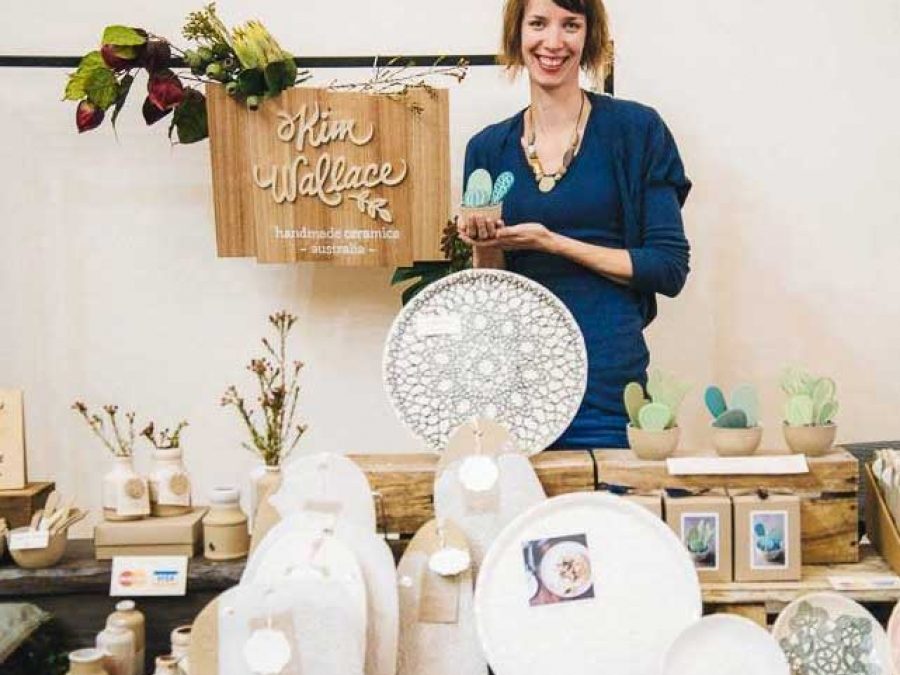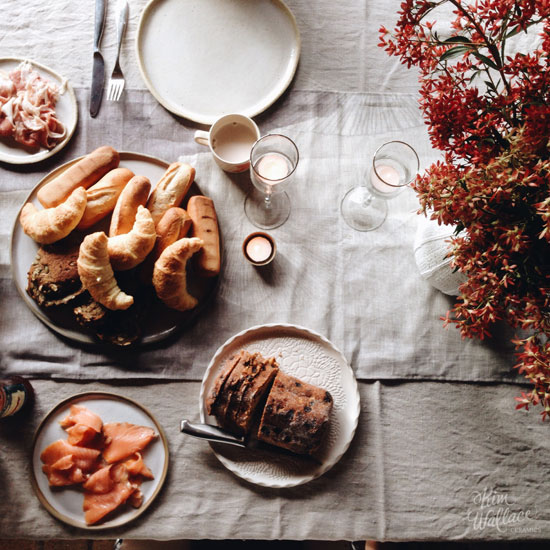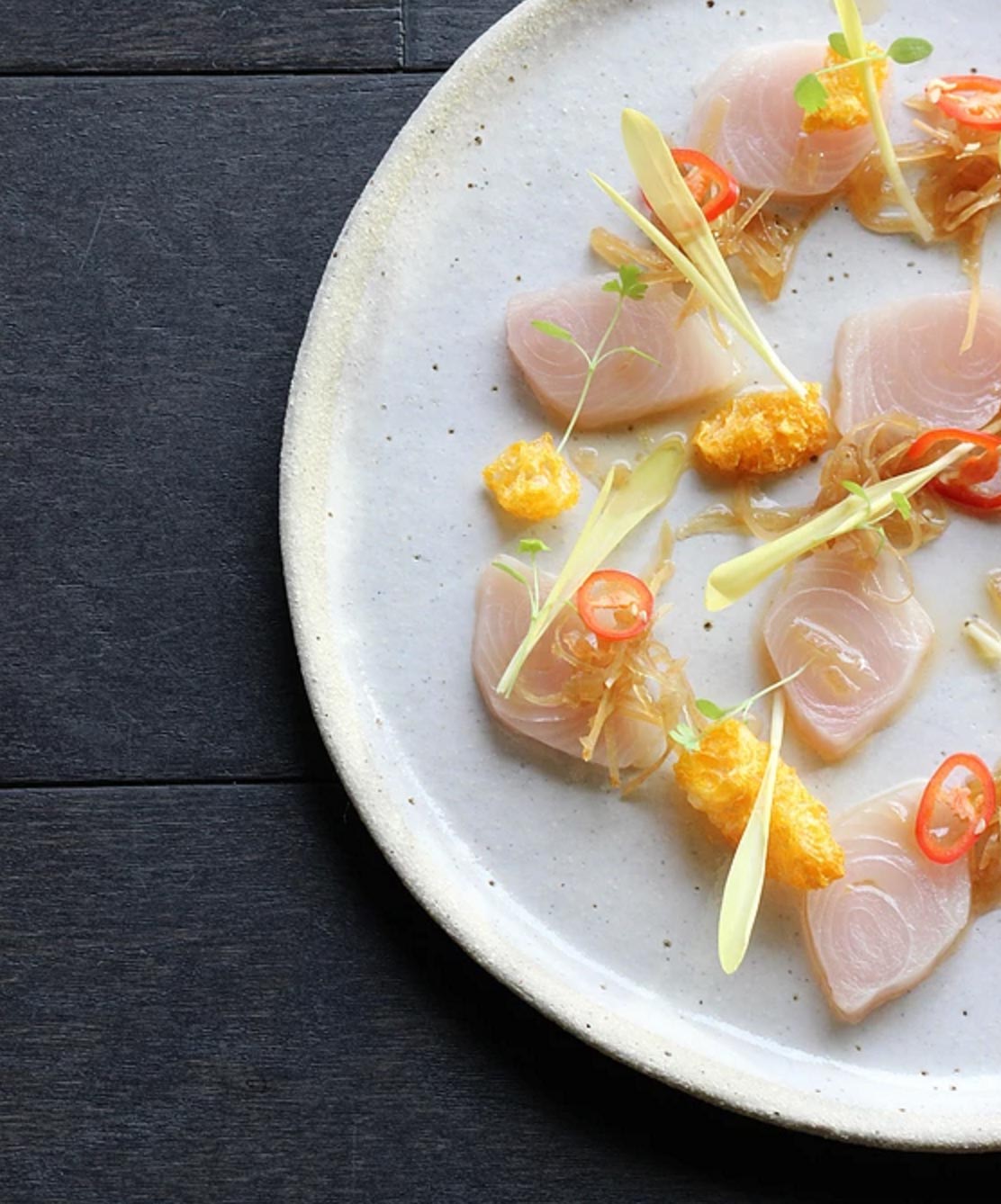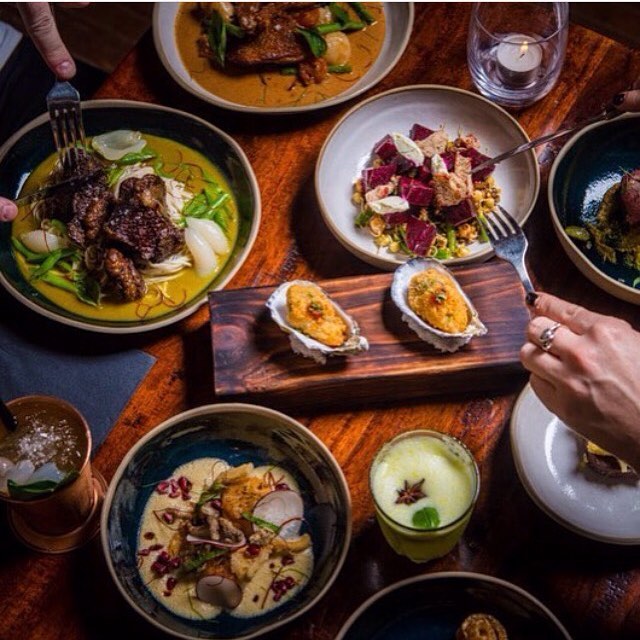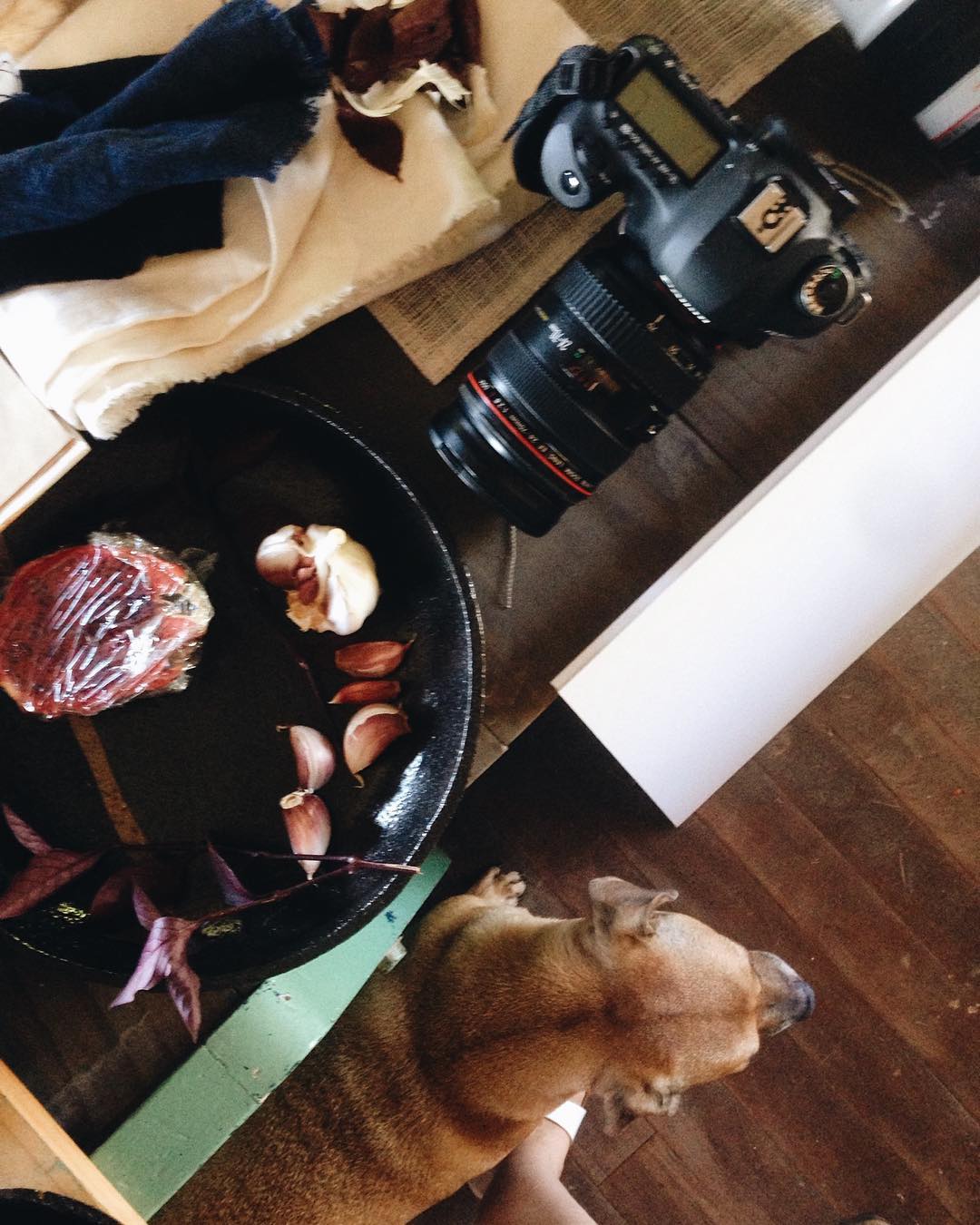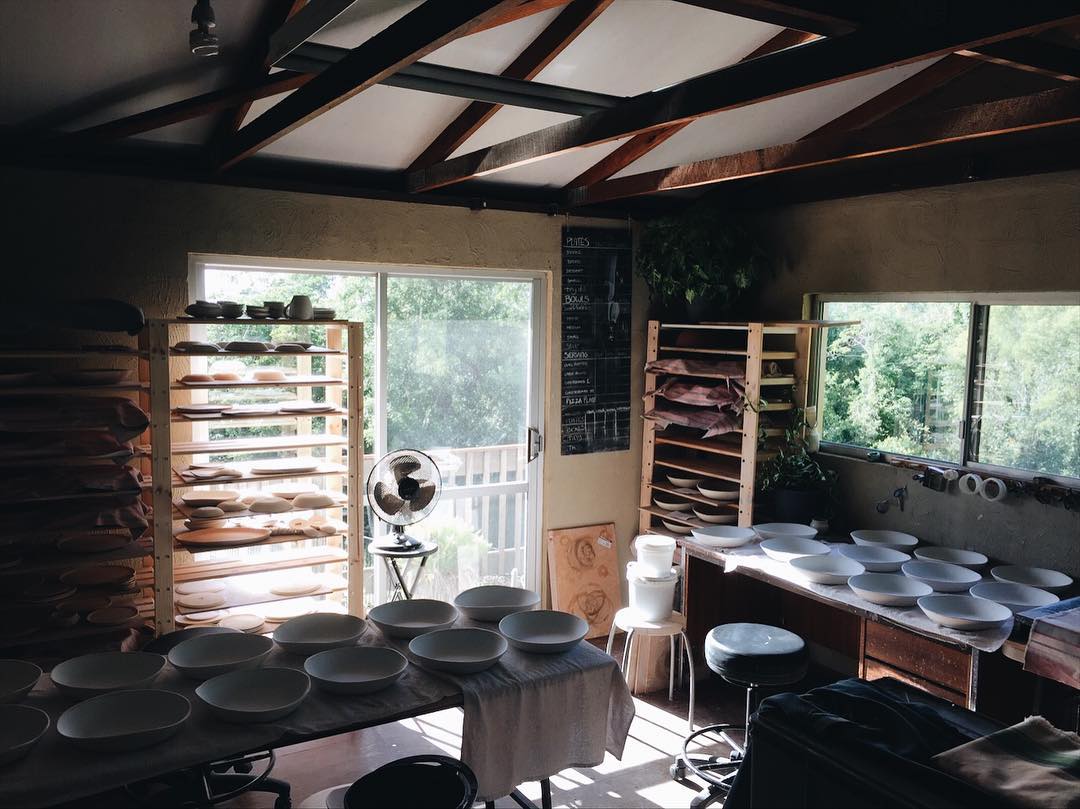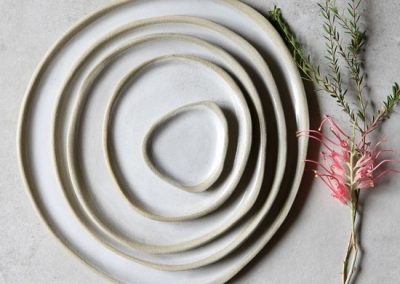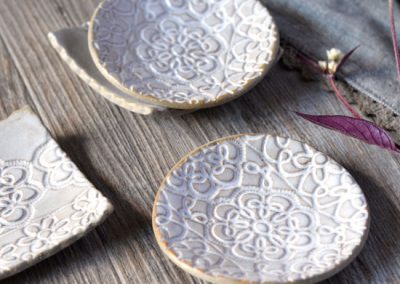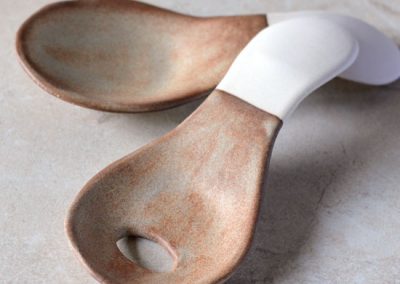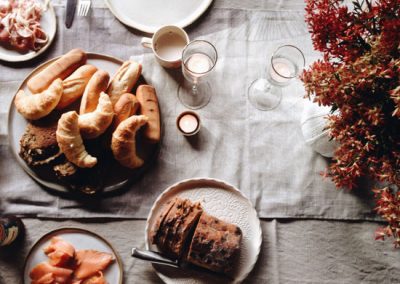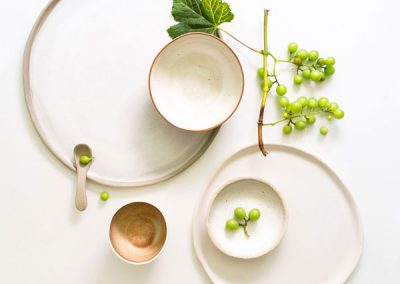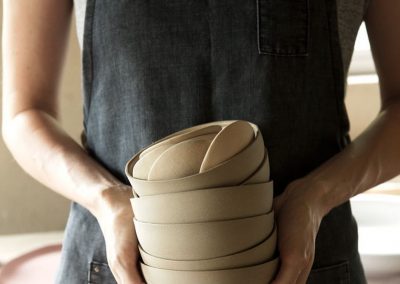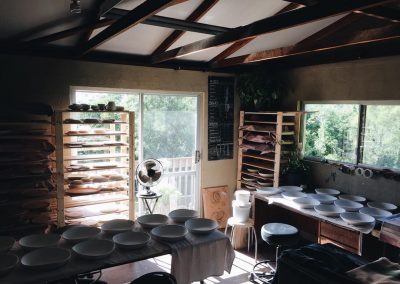My style is elegant simplicity focusing on materials and shapes and highlighting their beauty, providing a canvas for chefs and home cooks alike to plate their food.
I draw my colour inspiration from nature, focusing on earthy tones with a hint of aqua inspired by the ocean.
Your history with ceramics
How did you get started
I’ve always been creative and have done many short courses growing up. In 2008 I quit my job as a senior graphic designer and was keen to get my hands dirty again.
Ceramics was one of the creative outlets I dabbled in and my love for it grew very strong in a short amount of time. I haven’t looked back since!
Who was a teacher that had a strong influence on you
There wasn’t really a certain teacher, more so all the people that I have come across along the way.
Everyone was so very helpful when I only had a basic knowledge of things and no question was too much. Mainly other potters that I have met along the way or that were working at the pottery supplies store at the time.
I wouldn’t be where I am now without them as I probably would have given up without all their little golden nuggets of advice when things weren’t working for me!
What styles appealed to you when you were starting out
Anything and everything. My main journey starting out was to hone in on my own style and create a certain ‘look’ for my brand.
There are endless possibilities with ceramics and it took a while of trying all these different styles and techniques to find the ones that really suited me!
Were there any other influences from Australian or overseas artists/ceramicists
I started before instagram and I have to say that has been such a huge source of inspiration. I love following other ceramicists and potters around the world and seeing what goes on in their studios.
Current work practice
What kind of potter are you – how would you describe the pottery you do
We make functional tableware with a strong focus on earthy, natural designs and colours. I come from a design background, rather than a potter’s background.
I tend to focus more on simple shapes that showcase the clay and glaze, combining the right glazes and clays that will complement each other.
Which is more important to you – exhibitions, commercial (for sale) or artistic – for your own exploration and pleasure
Commercial. My studio has grown to employ two staff and it’s very much my bread & butter income.
I love the design phase of new pieces, it’s so exciting realising new designs.
All new work is definitely designed with production in mind ~ are they going to be cost-effective, can we produce enough should be get large orders, etc.
I’m not sure if it’s my graphic design background but I do prefer to work this way, designing a piece and then making multiples of it.
I’m a huge fan of cooking myself and it is such a thrill seeing chefs plate up on my pieces. I love supplying restaurants and customers around the country with my tableware and small production runs are part of that.
Life is busy with three little ones and the home-based business so I don’t tend to get much artistic free time.
Hopefully as the kids get older that will come back more and more.
How did you approach setting up your ceramics business
Three most important things you did that turned you from amateur to professional potter
- Engage a professional photographer to shoot my range for a specific purpose.
- Employ staff
- Lucky to find a home with purpose built artist studio that allowed me to grow my business (eventhough it’s starting to get a little small now 😉
Are there common mistakes you see other potters making when they are trying to become a professional ceramicist
I would never dare say someone is making a ‘mistake’. I think we are all just fumbling along doing the best we can.
I think having children has really helped me become more focussed on running the business as a ‘business’ if you know what I mean. I didn’t have the luxury of time or money anymore to fluff around with designs that were too labour intensive and were never going to give me an income. Or with clays that weren’t suited to my production methods.
I then employed staff to handle the overflow and cashflow became even more important.
If it was still just me, I would probably wouldn’t be quite so rigorous in cutting projects that aren’t viable.
How did you go about contacting and designing for local chefs
I am currently lucky enough to get all enquiries coming to me.
Through word of mouth or magazine exposure they find me and I love working with restaurants. I don’t do too many custom orders at the moment, they tend to order from my current range with perhaps a slight change in size to suit their needs.
In future I am hoping to offer more bespoke design services, for now this works as new pieces can require a lot of trial and error, something we currently don’t have the capacity for.
What is the type of tableware you most enjoy creating
Organic shapes pebble plates and bowls. They make the food really stand out and even a home-cooked meal plonked on in a hurry looks more delicious on a handmade plate 😉
Where is Your Studio
Noosa hinterland, overlooking the national park with the ocean in the distance.
Is it ideal for you
It is although as previously mentioned, starting to get a little small for us. It was built by a painter as his artist’s studio, and has a lot of character with exposed timber beams, timber floors and paint splatters all over.
There is an undercover area outside which is perfect for the kilns as well.
Do you work alone or as part of a collective
Not a collective but I have two staff currently, Nikki and Dakota.
How important is working with other artists
It really changed my business when I started working with others in my studio.
It’s so nice to have the constant feedback when you are designing or pondering on shapes and sizes, and instead of sitting on my own in the corner of my garage, fretting on the small stuff, I now have two amazing people in my studio to socialise with and bounce ideas of.
What equipment is crucial to your work and business
Slabroller and kilns are my main pieces of equipment.
How would you describe the current state of ceramics in Australia
It’s incredible to see the rise of handmade ceramics in both the retail industry and particularly the restaurant industry.
Chefs are really loving handmade ceramics at the moment and I find it so lovely to work with the, often they are just as excited about finding the perfect plate for their food.
I’m seeing workshops and courses pop up around the country and it is so encouraging when only recently all the ceramics courses were being discontinued. I think customers are realising that mass-produced does not add any value to your day-to-day life, a plate is just a plate with no love.
If you’re going to spend time cooking a lovely meal than what better way to finish it off than on a handmade plate. It really does make a difference for me personally, little touches during my day that are enjoyed just a little bit more because of a handmade cup or plate.
I am a big fan of collecting other potters work to enhance my own day-to-day 😉
CONTACT DETAILS
WEBSITE
www.kwceramics.com.au
kim@kwceramics.com.au
PHONE
Call us on 0404 187 248 (business hours only EST) with any queries you have. If we are not able to take your call, please leave a message and we will get back to you as soon as possible.

